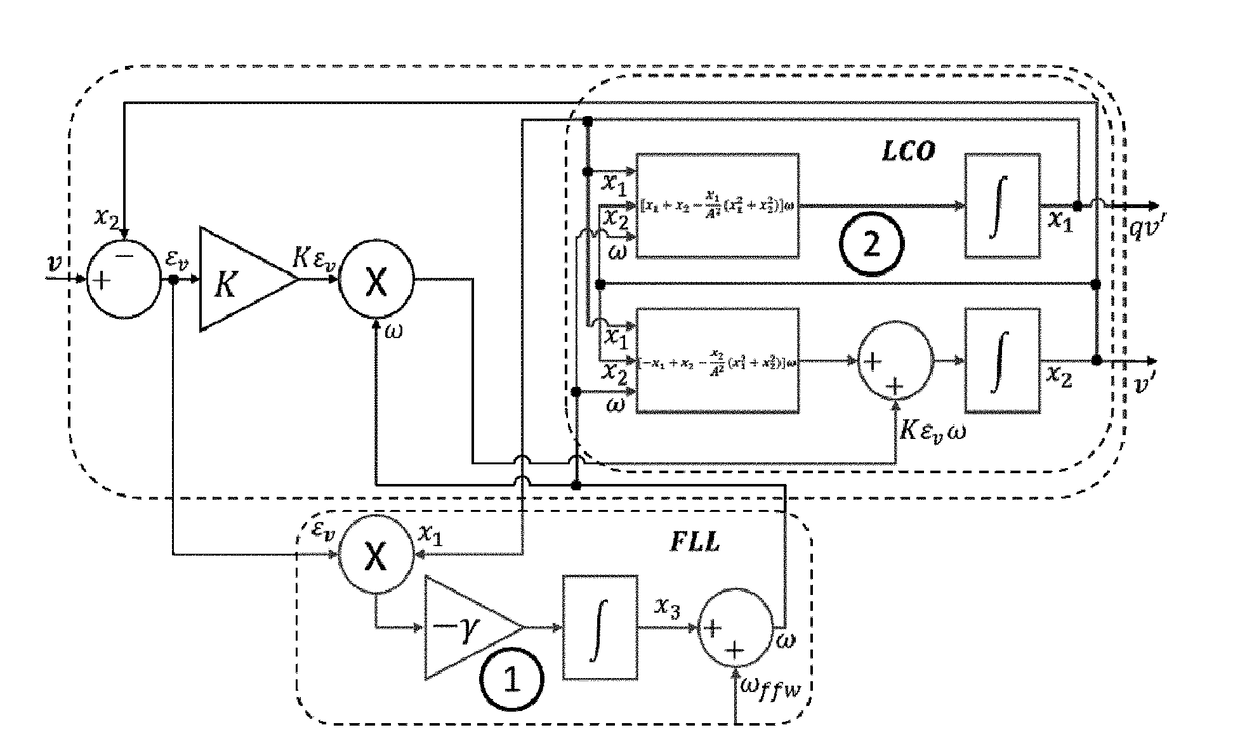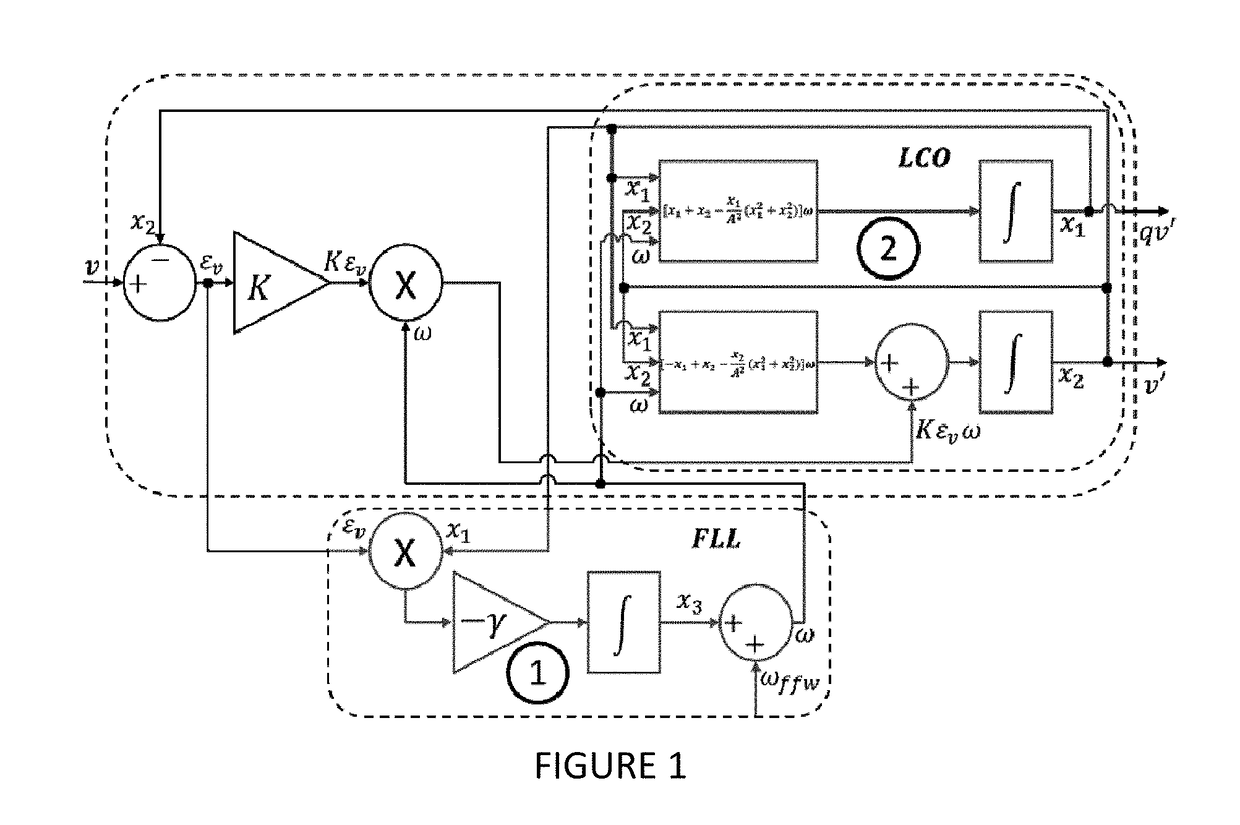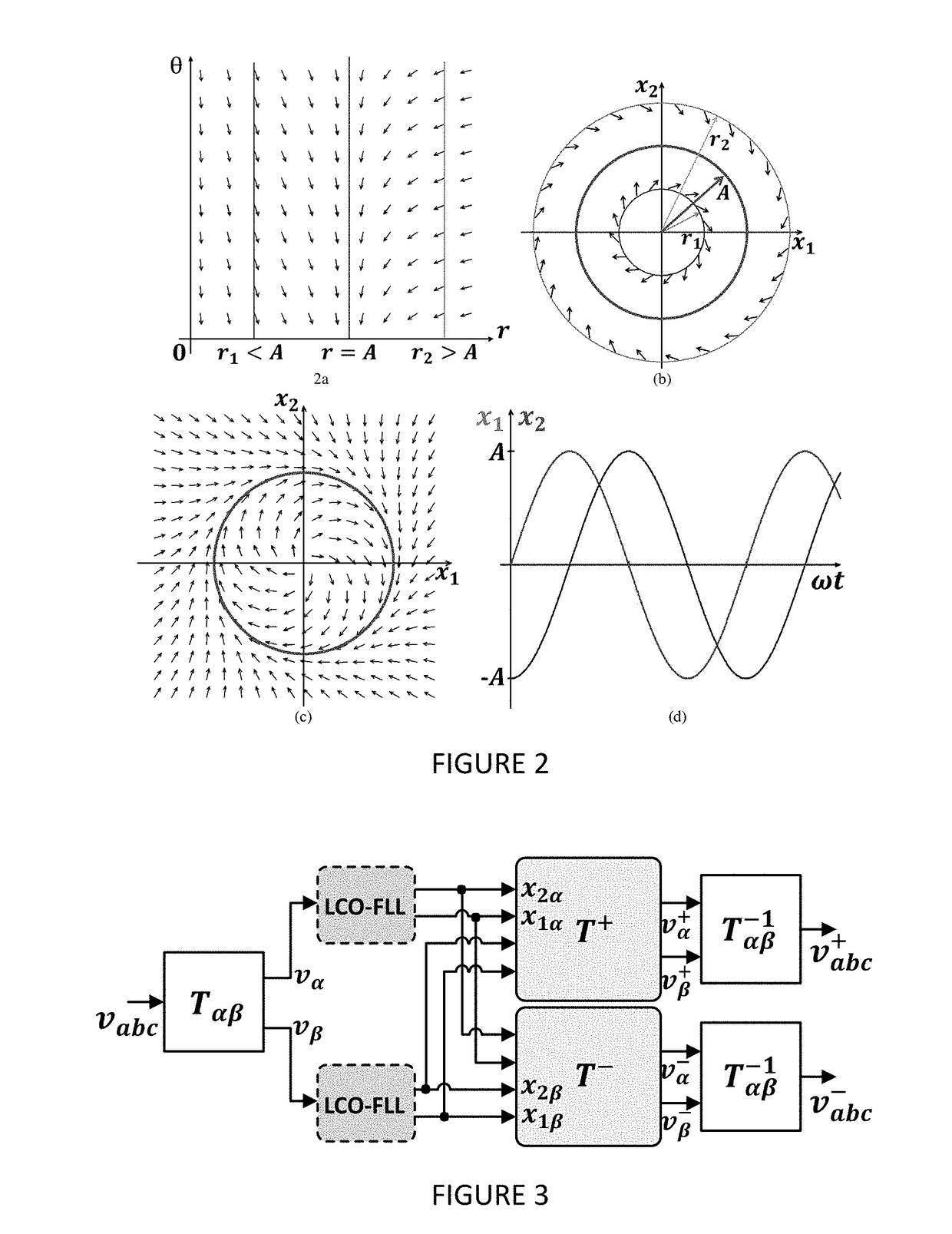Synchronizer for power converters based on a limit cycle oscillator
a technology of limit cycle oscillator and synchronizer, which is applied in the direction of photovoltaic energy generation, pulse automatic control, ac network circuit arrangement, etc., can solve the problem of not being able to adapt to the frequency by itsel
- Summary
- Abstract
- Description
- Claims
- Application Information
AI Technical Summary
Benefits of technology
Problems solved by technology
Method used
Image
Examples
example 1
[0056]A test was made to see the trajectory of the transient of both systems. Table I shows the initial conditions and the parameters of the LCO-FLL and the SOGI-FLL, which are the same for both systems. The frequency value of the reference was set at 60 Hz.
TABLE IProgramming parameters of LCO-FLL and SOGI-FLLParameterValuek, y1wffw377 rad / seg(x01, x02, x03)(10, 10, 10)v (Reference)sin(377t)
[0057]The test with the parameters of Table I is shown in FIG. 5 (a), in which the trajectories of the reference (Ch1), LCO-FLL (Ch3), and the SOGI-FLL (Ch4) are shown. FIG. 5 (b) shows the voltage error between the reference and the LCO-FLL; Here you can see that the transient time to synchronize it with the reference lasts approximately ˜9 ms, plus the error is monotonously decreasing. On the other hand, in FIG. 5 (c), an overdraft in the voltage error between the reference and the SOGI-FLL is shown before the error begins to decrease, which is an unwanted transition.
example 2
[0058]This test is performed to compare the transient of the frequency signal for both systems: LCO-FLL and SOGI-FLL, by varying the frequency of the reference. The test was performed as follows: The frequency of the input reference signal (9) changes from 45 Hz to 65 Hz (FIG. 6 (a)), and from 65 Hz to 45 Hz (FIG. 6 (b)). As can be seen in FIG. 6, the characteristics and advantages of the FLL are preserved after interconnection with the LCO, since the adaptability and dynamic behavior of the transient of the LCO-FLL are similar to that of the SOGI-FLL due to the that use the same frequency adaptation system.
example 3
[0059]This test is performed to observe the performance of both systems against a highly contaminated reference. A highly contaminated input reference was generated with the 2nd, 3rd, 5th, and 9th harmonics, with the percentage indicated in FIG. 7 (a). The total harmonic distortion (THD) of the input voltage is 20%. The behavior of both systems, LCO-FLL and SOGI-FLL can be seen in FIG. 7 (b). Both methods have good filtering characteristics, however the LCO-FLL has a better performance than the SOGI-FLL in terms of the reduction of harmonic disturbances, as can be seen in FIG. 7 (a). In addition, the THD for the LCO-FLL is 5.5%, which is better than the THD of the SOGI-FLL, which was 7.2%.
PUM
 Login to View More
Login to View More Abstract
Description
Claims
Application Information
 Login to View More
Login to View More - R&D
- Intellectual Property
- Life Sciences
- Materials
- Tech Scout
- Unparalleled Data Quality
- Higher Quality Content
- 60% Fewer Hallucinations
Browse by: Latest US Patents, China's latest patents, Technical Efficacy Thesaurus, Application Domain, Technology Topic, Popular Technical Reports.
© 2025 PatSnap. All rights reserved.Legal|Privacy policy|Modern Slavery Act Transparency Statement|Sitemap|About US| Contact US: help@patsnap.com



